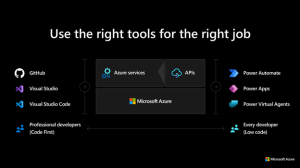
Since VMware Cloud Director 10.5.1 has been accessible for almost a few weeks now, let’s explore how this release can benefit Cloud Service Providers. Apart from the existing offerings already available to their clients, let’s consider the major supplementary services that can be provided by the Cloud Services Provider using this version of VMware Cloud Director.
To being with analyzing the graph reveals that security stands as the second most significant concern for any organization when they opt to host their services within cloud provider environments.
 Q: What are your organization’s top cloud challenges?
Q: What are your organization’s top cloud challenges?
All respondents: N=750, Enterprise: N=627, SMB: N=123
Source: Flexera 2023 State of the Cloud Report
This presents a significant opportunity for service providers to offer customers a self-service encryption solution or self-managed encryption service. VMware Cloud Director Encryption Management Service empowers customers to utilize their encryption keys or encryption software, enhancing the reliability and security of their data more effectively. This approach allows customers to take greater control and responsibility for securing their sensitive information, addressing their apprehensions about data security in the cloud. For more information on this read the blog VMware Cloud Director Encryption Management Service (BYOK/BYOKMS) and Thales CipherTrust Manager and VMware Cloud Director Encryption Management Solution Brief.
In a groundbreaking move, VMware Cloud Director has integrated Web Application Firewall (WAF) capabilities, revolutionizing the security landscape for cloud service providers and their valued customers. This new feature brings a host of advantages, starting with an unparalleled level of security. WAF integration fortifies cloud environments by providing an extra layer of defense against common web-based attacks like SQL injection and cross-site scripting. For businesses navigating stringent compliance requirements, this integration is a game-changer, ensuring adherence to industry standards effortlessly. What makes this integration truly exceptional is the customizable security policies and logging. This translates to boosted customer confidence, as they witness a higher level of data protection and reliability for their cloud-hosted services. VMware Cloud Director’s integration of WAF is not just a security upgrade; it’s a testament to a commitment to elevating cloud security and performance for a future-proof, trusted cloud experience. For more information on this read the blog What’s New in LBaaS with VMware Cloud Director 10.5.1.
The data from the graph underscores a growing interest and adoption rate among both businesses and service providers towards leveraging stream processing solutions. This trend suggests an increasing recognition of the benefits associated with real-time data processing, prompting more organizations to either implement or explore these services to enhance their operational capabilities and meet evolving customer demands.
 Q: Public cloud services used for all organizations
Q: Public cloud services used for all organizations
Source: Flexera State of the Cloud Report 2023
Upon reviewing the graph, it’s notable that a significant portion, accounting for approximately 31% of businesses, have adopted stream processing services. Furthermore, a substantial percentage of organizations, approximately 22%, are actively engaging in experiments with this solution. An additional 17% of these organizations have outlined concrete plans to implement and incorporate this stream processing service into their operations.
What is Stream Processing service?
Stream processing service refers to a technology or platform that enables the real-time processing, analysis, and manipulation of continuous streams of data as it is generated or ingested.
In essence, stream processing services handle data in motion, allowing organizations to perform various operations on this data while it is flowing, rather than storing and processing it in batches. These services facilitate the handling of large volumes of data from diverse sources, such as IoT devices, sensors, social media, financial transactions, and more.
Why is it important?
These services are crucial in various domains, including real-time analytics, fraud detection, monitoring, recommendation systems, and more, enabling organizations to derive actionable insights, make prompt decisions, and respond in real time to changing conditions or events based on incoming data streams.
What is Kafka Service?
Apache Kafka is an open-source distributed event streaming platform designed for building real-time data pipelines and streaming applications, Kafka is used for handling high-throughput, fault-tolerant, and scalable data streams. At its core, Kafka acts as a highly durable and scalable messaging system that facilitates the publishing and subscribing to streams of records, enabling applications to send messages in real-time. It’s known for its high performance, reliability, and ability to handle massive amounts of data across various applications.
The category of service that Kafka falls under is often referred to as a “stream processing” or “event streaming” service.
Kafka is designed specifically to handle streams of data in real-time, making it a core component of streaming data architectures. It enables the ingestion, storage, and processing of high-throughput data streams efficiently while ensuring fault tolerance and scalability.
As part of the broader category of stream processing, Kafka facilitates the real-time processing and analysis of continuous data streams, allowing businesses to derive insights, perform analytics, and react promptly to events as they occur. Its capabilities make it an integral part of building data pipelines, event-driven architectures, and real-time data processing systems.
To know the complete list of new and enhanced features in VMware Cloud Director 10.5.1, read the blog VMware Cloud Director 10.5.1 is now GA.
To share this blog with your peers and colleagues, please use this link: https://bit.ly/3GGzFSf

